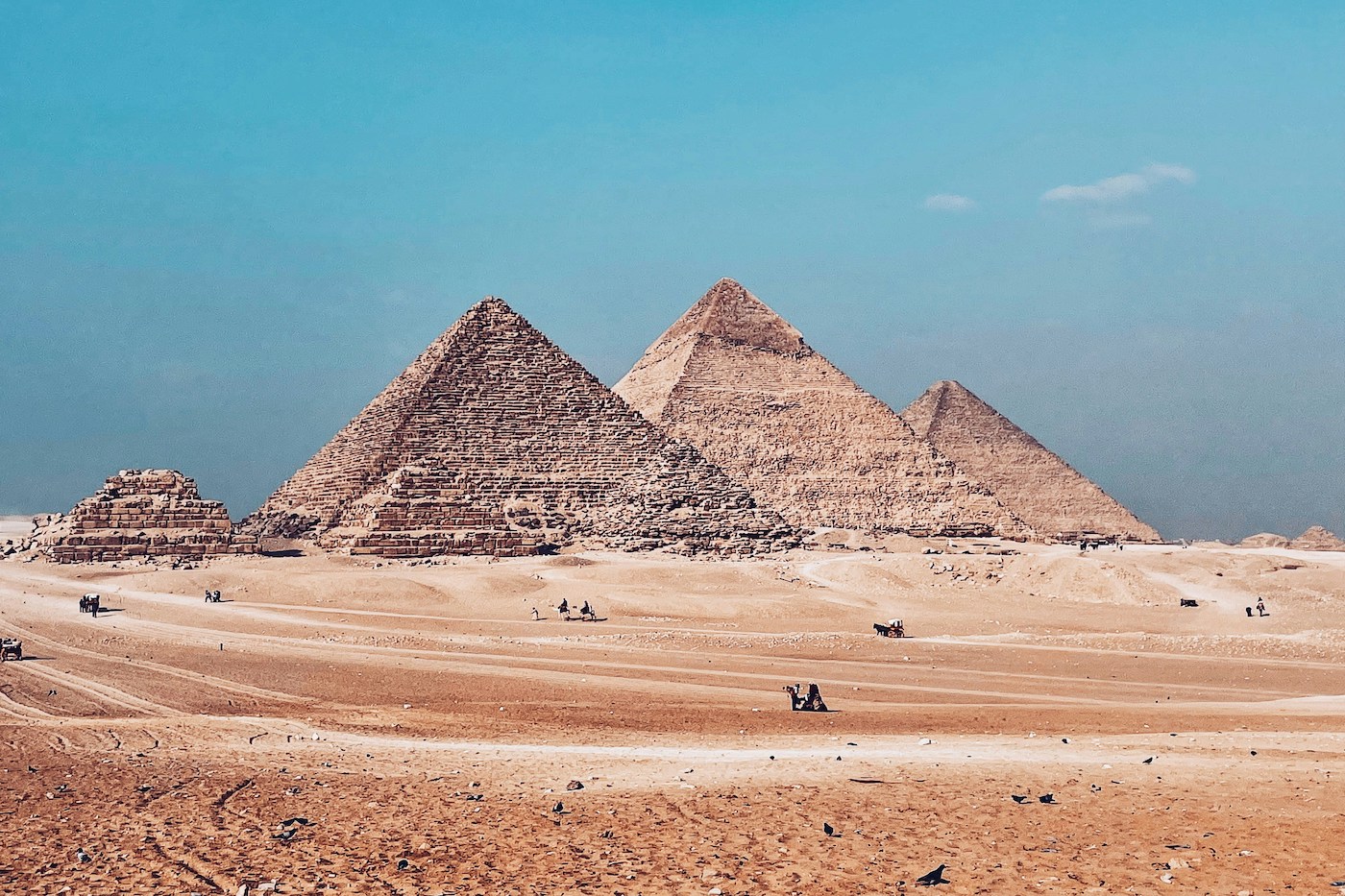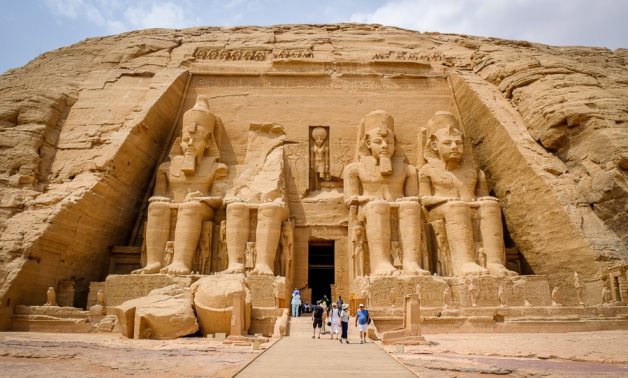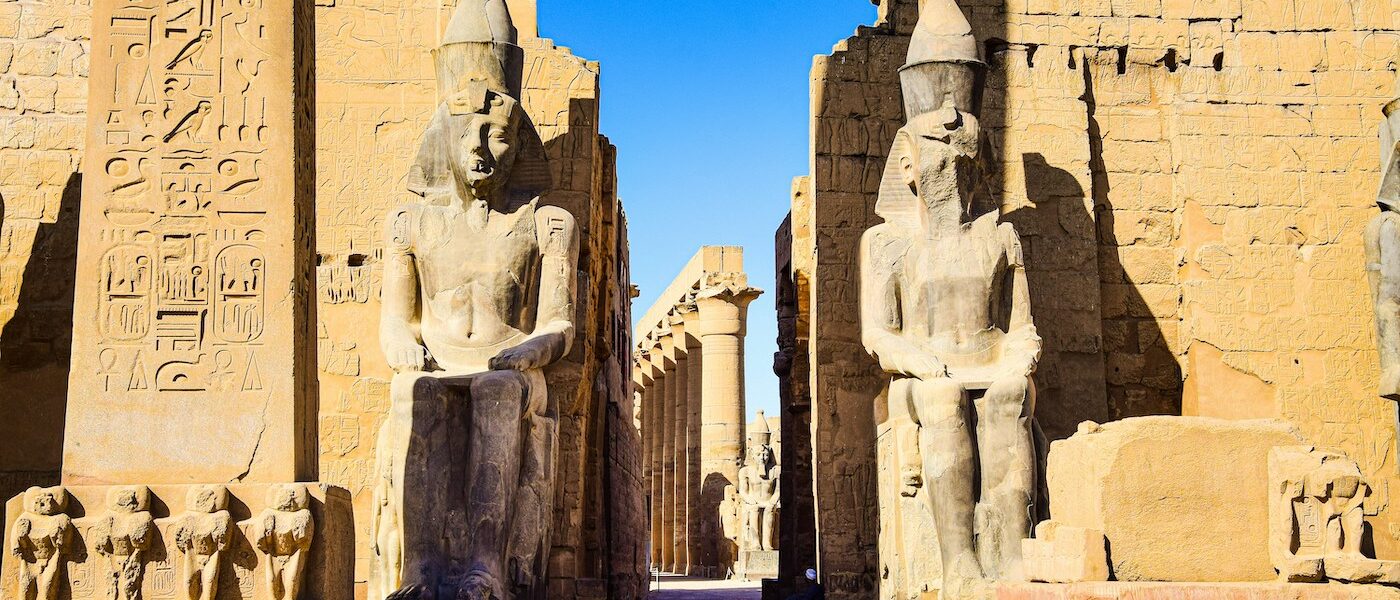The Majesty of the Temple of Ramses III at Medinet Habu
A Grand Funerary Monument from Ancient Egypt
As a professional and creative travel agent and history content writer and native French speaker, I invite you to discover the Temple of Ramses III at Medinet Habu in Luxor, an architectural and historical masterpiece that stands out as one of the last great funerary structures of western Thebes. Built on the west bank of the Nile, this temple is currently the best-preserved monument in this region. Modeled after the Ramesseum of Ramses II the Great, it is a testament to the ingenuity and grandeur of the ancient Egyptians.
Located on the southern edge of the necropolis, near the sacred site of the Theban Hill, the temple is a site of great religious significance. According to tradition, it was here that Amun appeared and the Hermopolitan Ogdoad, a group of eight deities involved in the creation of the world, rested. Visitors can experience the spirituality of the place by exploring the various structures and ancient inscriptions that tell fascinating mythological stories.
The temple is entered through three majestic gates, two to the west and one to the east, the latter being the best preserved. These richly decorated gates represent a type of architecture unique to Egypt, inspired by the entrances to Middle Eastern fortresses called migdol. These gates are designed as decorative towers and served as both a residence and a representative palace for the pharaoh during the festivals held in western Thebes.
A Unique Architectural Discovery
To visit the Temple of Ramses III is to immerse yourself in a world where every stone tells a story. Medinet Habu is particularly notable for its temple-palace, the best-preserved in Thebes, as well as for the magnificent decorations of its first pylon and courtyard. The carved reliefs on the walls depict Ramses III’s victory and provide a glimpse of military might and royal divinity.
Inside the palace, on the north wall, is the Window of Apparitions, where the king sat during religious ceremonies. This unique structure allowed the pharaoh to be visible to his subjects, thus reinforcing his divine aura. After the ruler’s death, a false door, also called a “Ka Gate,” was placed in the back wall of the throne room. This symbolic door allowed the pharaoh’s soul to pass from the tomb to the palace to participate in sacred rites.
The temple’s second courtyard is decorated to celebrate festivals honoring Min, the god of the harvest, and Sokaris, the ruler of the dead. The Beautiful Festival of the Valley, a major celebration, was also held here. Unfortunately, as at many other sites in the Theban region, the Copts, or Egyptian Christians, left their mark by destroying statues and forging crosses on the temple walls to build their churches.
The Medinet Habu Complex: A Religious and Administrative Center
The Medinet Habu complex is not limited to the temple of Ramesses III. It also includes residential buildings for priests, administrative structures, barracks, stables, ponds, and gardens. This multifunctional site served as a hub for religious and civil activities. Priests lived there, and religious ceremonies were held with great pomp.
The administrative buildings attest to the importance of Medinet Habu as the administrative center of western Thebes. Archives and official documents were kept here, and state affairs were discussed and conducted. The barracks and stables also demonstrate the site’s military role, where soldiers were trained and stationed to protect the necropolis and the region’s inhabitants.
The ponds and gardens of Medinet Habu add a dimension of natural beauty to this historic site. These green spaces were used for purification rituals and religious ceremonies, providing a peaceful and sacred setting. The gardens, planted with trees and flowers, symbolized fertility and eternal life, recurring themes in ancient Egyptian religion.
Visit Egypt with Us: An Unforgettable Experience
As a professional and creative travel agent and history content writer and native French speaker, I strongly encourage you to visit Medinet Habu for a unique and enriching experience. The Temple of Ramses III is an impressive testament to Egyptian history and culture. By exploring this site, you will discover the exploits of Ramses III, ancient religious practices, and majestic architecture that continues to fascinate scholars and tourists from around the world.
Visitors can stroll through the spacious courtyards, admire the detailed reliefs, and experience the mystical atmosphere of this sacred place. Experienced guides offer in-depth tours, explaining every detail and story carved into the temple walls. History buffs and culture enthusiasts will find an inexhaustible source of knowledge and inspiration here.
To make your visit even more enjoyable, the Medinet Habu complex boasts modern facilities, including visitor centers with informative films about the temple’s history, souvenir shops, and rest areas. These amenities ensure that every visitor can fully enjoy this journey into the glorious past of ancient Egypt.
The Spiritual and Cultural Role of Medinet Habu
The Temple of Ramses III at Medinet Habu is not only a tourist attraction, but also a place of great spiritual and cultural significance. It represents one of the last great mortuary temples built in Egypt and is an outstanding example of ancient Egyptian architecture and art. The inscriptions and reliefs offer valuable insights into the religious beliefs, ceremonial practices, and mythological narratives of the time.
The relationship between deities and pharaohs is beautifully illustrated at Medinet Habu. Battle scenes, coronation ceremonies, and religious rituals demonstrate how the ancient Egyptians viewed their rulers as divine beings entrusted by the gods to govern the land and ensure the prosperity and stability of the kingdom. These depictions reinforced the pharaoh’s power and legitimized his reign.
Medinet Habu continues to inspire current and future generations. Conservation and restoration efforts are helping to preserve this historic treasure for generations to come. By visiting this site, you are contributing to the protection and enhancement of this world heritage site, ensuring that its history and beauty can be enjoyed by all.
Discover the Grandeur of Luxor and its Surroundings
As a professional and creative travel agent and history content writer, I invite you to discover not only Medinet Habu but also the many wonders of Luxor and its surroundings. Luxor, formerly known as Thebes, is a city rich in history and archaeological treasures. From the Valley of the Kings to Karnak, each site tells a part of the fascinating story of ancient Egypt.
Luxor is often called the world’s largest open-air museum, and rightly so. The city is home to some of the most impressive and best-preserved monuments from antiquity. Majestic temples, ornate tombs, and modern museums offer visitors an immersive and educational experience. Luxor is a must-see destination for history, culture, and adventure lovers.
For a complete experience, plan your visit with professional guides who can offer detailed insights and interesting anecdotes about each site. Take advantage of Nile cruises to admire the picturesque landscapes and historical monuments from the water. Luxor also offers luxury accommodation options, gourmet restaurants, and lively markets where you can experience contemporary Egyptian culture.








1 thought on “Grandeur of the Temple of Ramses III in Luxor,”
Hi, this is a comment.
To get started with moderating, editing, and deleting comments, please visit the Comments screen in the dashboard.
Commenter avatars come from Gravatar.